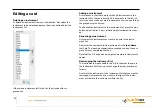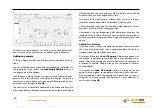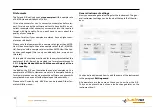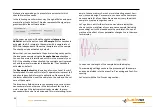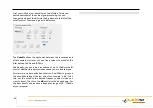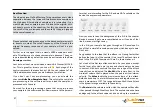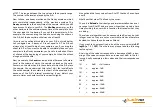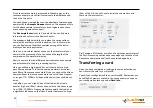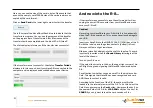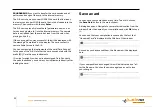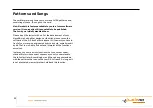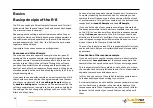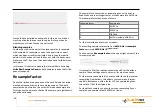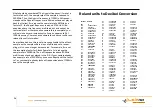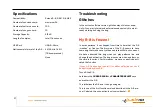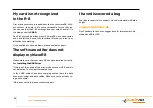
Basics
Basic principle of the R-8
The R-8 can read up to 26 instruments from one card. This limi-
tation exists from the card format itself and cannot be changed.
The minimum is one instrument.
Depending on the setting, each instrument consists of one or
two samples, which can initially be pre-processed separately in
the software and stored separately on the card. Both samples
are read separately by the R-8 on-the-fly from the card, mixed
together and then played.
In principle, three use cases can be distinguished:
Resonance and Attack Sample
The main use case is to separate a sample into a low-pass fil-
tered part, the resonance sample, and a highly-pass filtered part,
the attack sample. Your sample is broken down into the above
parts by internal filters in the software. Through the software
you have the possibility to edit or change both parts indepen-
dently of each other. As already mentioned above, both parts are
stored separately on the card and mixed together by the R-8 and
played back together.
If you want to use a specific sample as an instrument in your R-8
that should sound exactly like the original sample, load the sam-
ple into your instrument via the
Load Single Sample
button or
by
double-clicking on
the instrument in the instrument list. The
software separates your sample into the two parts, according to
the settings. You can change the settings such as cuto
ff
of the
filters etc. at any time.
You can also load a separate sample for each part, for example,
to create interesting new drum sounds. For example, you can
combine the low-frequency part of one sample with the attack
of another sample. To import your sample, use the buttons in the
respective Part
Load LF Sample
and Load
HF Sample
.
If you use both parts of your sample according to this method,
the decay parameters for both parts are available to you as usual
on the R-8. You can also amplify or lower the resonance sample
using the
Nuance
parameter on the R-8. Here you should pay
attention to the cuto
ff
of your filters! If you only want to raise or
lower a frequency range below 80Hz via the Nuance, you must
also set the cuto
ff
of your pre-filters to 80Hz.
The use of both parts is preset. This is especially useful for kicks,
snares and toms. But you will certainly find even more possible
applications.
Deactivation of the resonance sample
If you do not want to use the resonance sample, deactivate the
check mark at
Accepts Nuance
of the resonance sample. The
sample is then not saved on the card. This saves storage space.
This is especially useful for cymbals, hi-hats, clicks, etc., where
the samples have naturally little depth and if it is not desirable to
separate the resonance and attack parts.
In this case, you can turn the cuto
ff
of the attack sample down
to the desired frequency according to your taste.
An indicator that you do not need the resonance sample is when
you can hardly see a vibration in the waveform display of the
resonance sample. These frequencies are then of such little im-
portance for the sound of your sound that you can safely omit
them.
34
Summary of Contents for WaveR8
Page 1: ......

